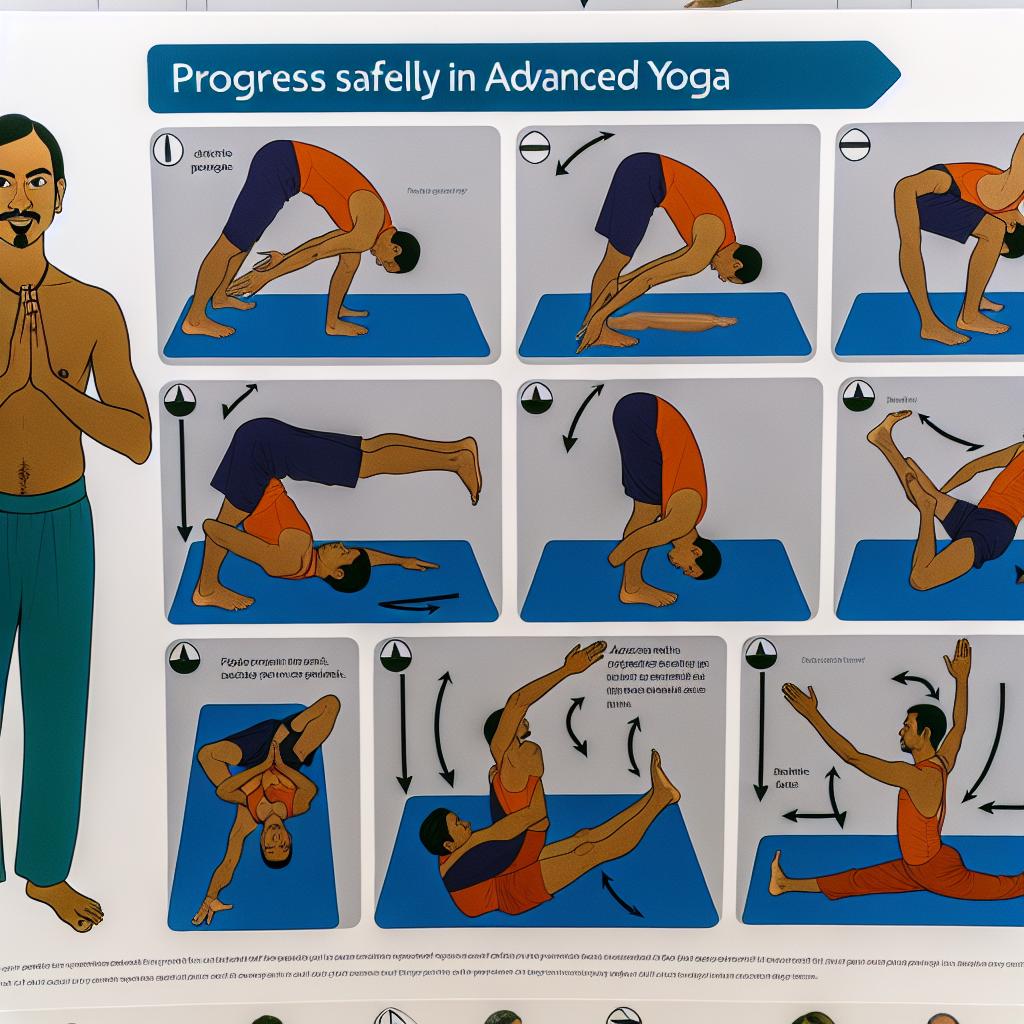How to Progress Safely in Advanced Yoga Poses
Introduction to Advancing in Yoga
Progressing in advanced yoga poses necessitates a mindful approach, as these postures demand greater strength, flexibility, and balance. A structured and informed practice will enhance safety and prevent injuries.
Understanding Your Current Level
Identify where you stand in your practice. Consider factors such as flexibility, strength, and experience. Practitioners should be comfortable and stable in foundational postures like Downward Dog and Warrior II before attempting advanced poses. It is important to recognize and respect your limits, as overestimating your abilities can lead to injury.
Consulting an Experienced Instructor
Engage with a certified yoga instructor who can offer personalized advice and corrections. An experienced teacher can guide you through modifications and preparatory poses that build up to advanced postures. Yoga Alliance provides a directory of qualified instructors who can provide guidance suited to your needs.
Progressive Muscle Engagement and Flexibility
Developing strength and flexibility incrementally is crucial. Focus on targeted exercises that enhance muscle engagement required for specific advanced poses. For instance, to master the headstand, substantial core strength and shoulder stability are essential. Incorporate dynamic stretches and strength-building exercises in your routine to gradually enhance your capability over time.
Utilizing Props
Props such as blocks, straps, and bolsters can facilitate access to advanced poses, allowing practitioners to focus on alignment and gradually work towards the full expression of the pose. Utilizing props can help maintain safe form and prevent overextension.
Incremental Approach to New Asanas
Advanced poses should be approached progressively, through a series of preparatory asanas. For instance, poses such as Bakasana (Crow Pose) can serve as a precursor to building strength and balance necessary for more challenging arm balances like Astavakrasana. Endeavoring to achieve these postures step-by-step maintains safety and enhances skill acquisition.
Practicing Under Supervision
When attempting a new advanced pose, doing so under the watchful eye of a teacher is advisable. This oversight ensures alignment and technique are correct, minimizing the risk of injury. If self-practice is unavoidable, consider recording your sessions to self-assess form and placement, enabling corrections in posterior practices.
Listening to Your Body
Intuition plays a significant role in yoga practice. Pay attention to physical sensations and bodily feedback during practice. Discomfort is natural in the expansion of limits, but pain indicates an improper approach or overstretching. Rest and consult an instructor if persistent discomfort occurs.
Rest and Recovery
Adequate rest days are crucial to the recovery process, preventing overuse injuries, and allowing muscles to repair and grow stronger. Integrating relaxation techniques such as meditation or restorative yoga can aid recovery and maintain mental balance.
Conclusion
Progressing safely in advanced yoga poses requires a combination of listening to one’s body, engaging with knowledgeable instructors, and employing a systematic approach to building strength and flexibility. By adhering to these considerations, practitioners can achieve advanced poses safely, enhancing both their yoga experience and physical development.
